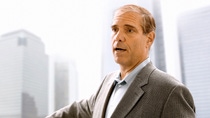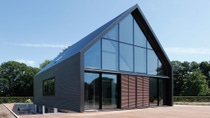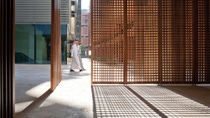Chi siamo
Our urban future
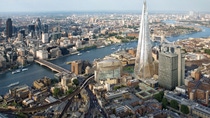
Humanity has hit a milestone: There are now more of us living in cities than in the countryside. By 2050 it is estimated that 75% of us will be urban dwellers.
This is uncharted territory for mankind, and it comes with a unique set of challenges. How do you curb the urban sprawl that has afflicted some of the world’s megacities? How do you create cheap, affordable housing for the millions of people migrating from rural areas and reduce the population of slums? And how can power consumption be reduced in cities, which currently consume over two-thirds of the world’s energy?
Innovations in both technology and engineering are allowing a new generation of skyscrapers to take form. In London, the Shard is transforming the city’s skyline, dwarfing the Tate Modern and St. Paul’s Cathedral. The Shanghai Tower – due for completion in 2014 – is set to become China’s tallest building, and in Dubai the Burj Khalifa, completed in 2009 is taller than any other building in the world.
Such landmark projects have been lauded and criticized in equal measure. While some celebrate them, others question their ambition. Yet many others argue that this leap in scale is necessary to prevent urban sprawl and help cut emissions.
Those in favor of super-skyscrapers maintain that planners need to build up, not out and that this ‘densification’ is a mark of cities of the future. And while dense urban areas concentrate local services and reduce travel distances, they can evoke images of a grey, concrete jungle – and perhaps a lowering in living standards. But with new innovations and technology, the cities of tomorrow promise something hugely desirable: high-density living that is cleaner, more energy efficient, and more comfortable for residents.
Previously, skyscrapers were generally designed as commercial space – but today’s super-tall skyscrapers are different. The Shard is not simply another office block but is described by its architect Renzo Piano as a ‘vertical village’ that will house homes, restaurants, offices and a hotel.
The Burj Khalifa in Dubai has been pitched as a ‘lifestyle community’ with parks, residential apartments, shops, restaurants and hotels. Even the Shanghai Tower, at the center of Shanghai’s financial district, accommodates open public spaces with restaurants, cafés, shops and gardens.
These are spaces to work, sleep, play and socialize. The old habit of walking out of the office and down the street to grab a coffee and bite to eat will be replaced by walking into the elevator and zooming either up or down to your nearest café.
Sustainable cities from scratch
While new skyscrapers are currently sprouting in existing cities, there is another trend of building entire cities from scratch — most notably in emerging economies that are seeing the greatest proportion of rural to urban migration. Songdo in South Korea, for example, is located on six square kilometers of reclaimed land, and is the world’s first fully IT-networked city, where everything from grocery orders to medical check-ups can be done remotely, computer to computer. The entire city is being built on eco-friendly design principles that include vegetated green roofs to prevent stormwater runoff and promote biodiversity, energy-efficient LED traffic lights, even an underground waste system that will eliminate the need for garbage trucks.
In China, Tianjin is being built as a new Eco-City, complete with sun-powered solarscapes, wind power, rainwater collection and many other green technologies. Amanora Hills in Pune, India, is a vast development that will include affordable housing with 20% of the space given over to parks, gardens and playgrounds. It too has respectable eco-sensitive design credentials with efficient waste management, rainwater harvesting and a solar tree plantation.
Creating gardens and parkland within these new cities is not just for aesthetic purposes, but to prevent what are called urban heat islands. These are heat-trapping urban landscapes, such as buildings and paved surfaces, that can dangerously raise temperatures – and lower air quality.
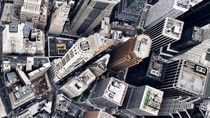
The new generation of skyscrapers and cities dazzle with their sheer ambition – but there is another less glamorous aspect to urban living. In many parts of the world, the majority of people moving from rural areas to cities will begin their urban life in a city slum – often without electricity or clean water. Since slum dwellings tend to be substandard, residents are particularly vulnerable to the forces of nature, such as flooding and earthquakes.
Creating affordable, quality homes for these people is as much a priority for city planners as conceiving new city landmarks – and innovations are allowing such homes to be built quickly and cheaply. In these situations, speed matters:
The faster a structure is built, the less it costs. Safety is also important: The more robust and resilient a structure, the longer it will last.
Achieving this threefold goal of speed, safety and affordability may sound overambitious, but new technologies and innovative thinking mean this is happening already. Around the world, architects, city planners, local government and companies are working together, applying sustainable design principles to everything from the loftiest skyscrapers to the humblest homes. Such aspirations are driven less by ideals and more by sheer demand – but if humanity is to move successfully into its urban future, sustainable construction must be the shape of things to come.
